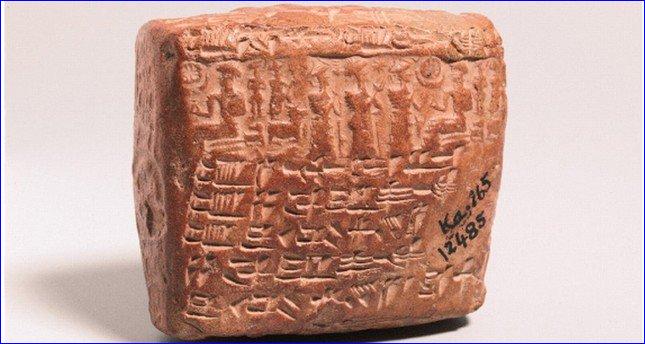


Related: Brief History of Assyrians
The inscription was meant for the Assyrian families of the time. The clay record stated that the wife should allow her husband to hire a female slave to act as a surrogate if the couple could not conceive within two years after the date of their marriage, according to Daily Sabah. The location of the find was home to a settlement and trade colony of the Old Assyrian Empire from 2,100 BC and 1,800 BC. Professor Ahmet Berkız Turp from Harran University's Gynecology and Obstetrics Department said, "The female slave would be freed after giving birth to the first male baby and ensuring that the family is not left without a child."
Knewz.com noted that the Assyrian contract was written in a wedge-shaped cuneiform script which was one of the earliest forms of writing. Regarding the steps of the process, it emphasized that the hired slave, known as a hierodule, should be freed after the birth of the first boy. It was now on display at the Istanbul Archaeology Museum as the earliest known evidence of human infertility. The Assyrian Empire was a complex Mesopotamian civilization that dated back to the 25th century BC, as per Newsweek. Mesopotamia was where people first gathered in large cities, created governments, and learned to write the first script.
Related: Assyrians: Frequently Asked Questions
The Assyrian Empire was among one of the earliest civilizations in world history. It was also the site where over 1,000 Old Assyrian tablets were found in 1925, known as the Cappadocian tablets. The inscription of the Hierodule, based on the situation, was variously translated as surrogate, slave, prostitute, or some combination as such. They might have been described as being 'married' to the husband, but the implications of sexual slavery were nonetheless the same. Their 'function,' concerning how they were used by other human beings was specific to situations like the ones that were described in the tablet, which was an odd catch-and-release form of relationship, according to MailOnline.
The prenuptial agreement added to an enormous trove of Old Assyrian records that were previously found in the area in 1925 by F. Hrozny. A fire eventually destroyed the settlement where the tablets had been found by archaeologists, according to Ancient Origins. It must have occurred suddenly as the excavations revealed that many of the tablets were still in their clay envelopes which indicated that the merchants did not have time to send out their recently written letters or open the newly received ones. The cuneiform tablets provided an original resource for the fascinating study of the pre-Hittite (circa 1940 BC to 1740 BC) network of Assyrian merchant colonies in Bronze Age Anatolia.

or register to post a comment.